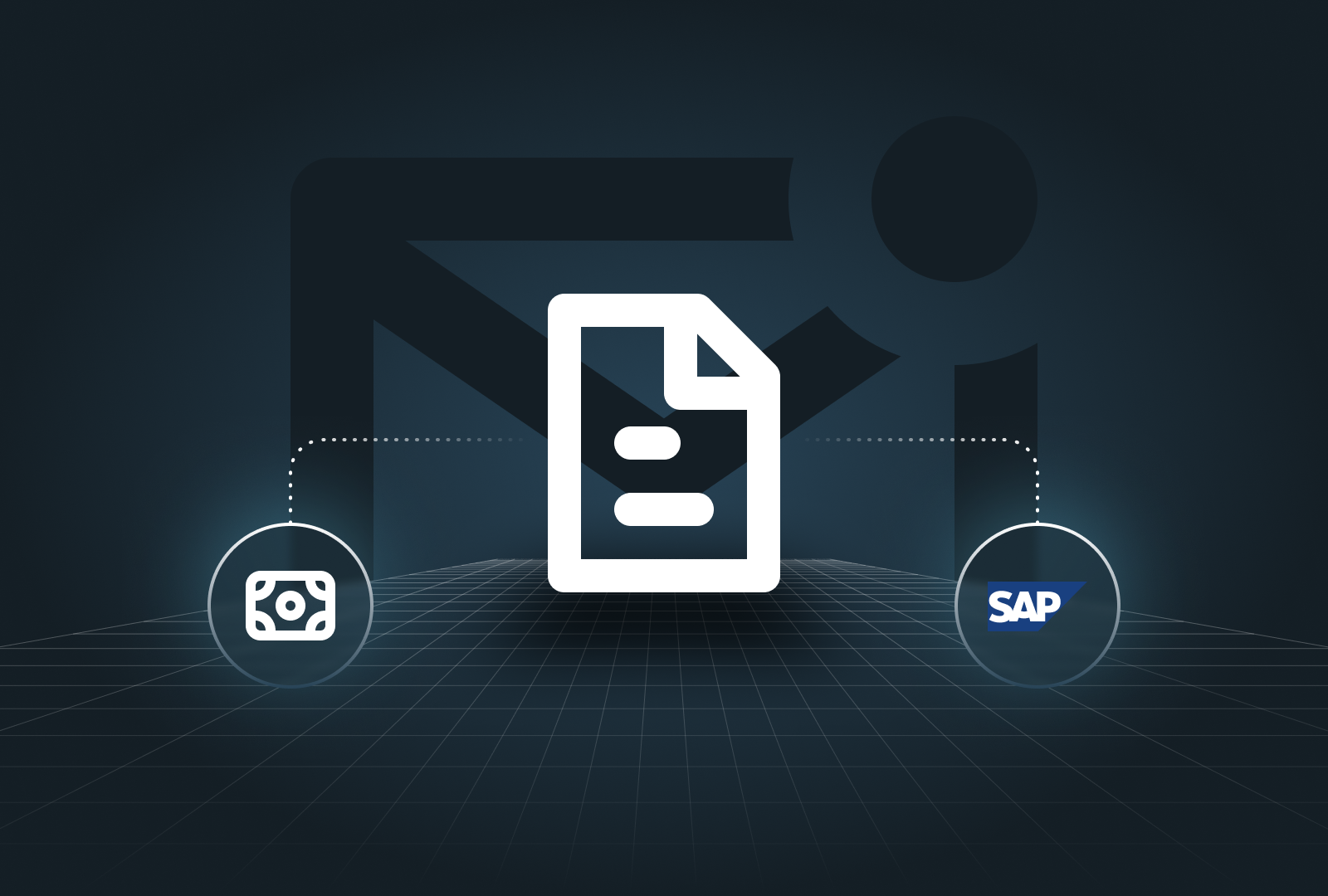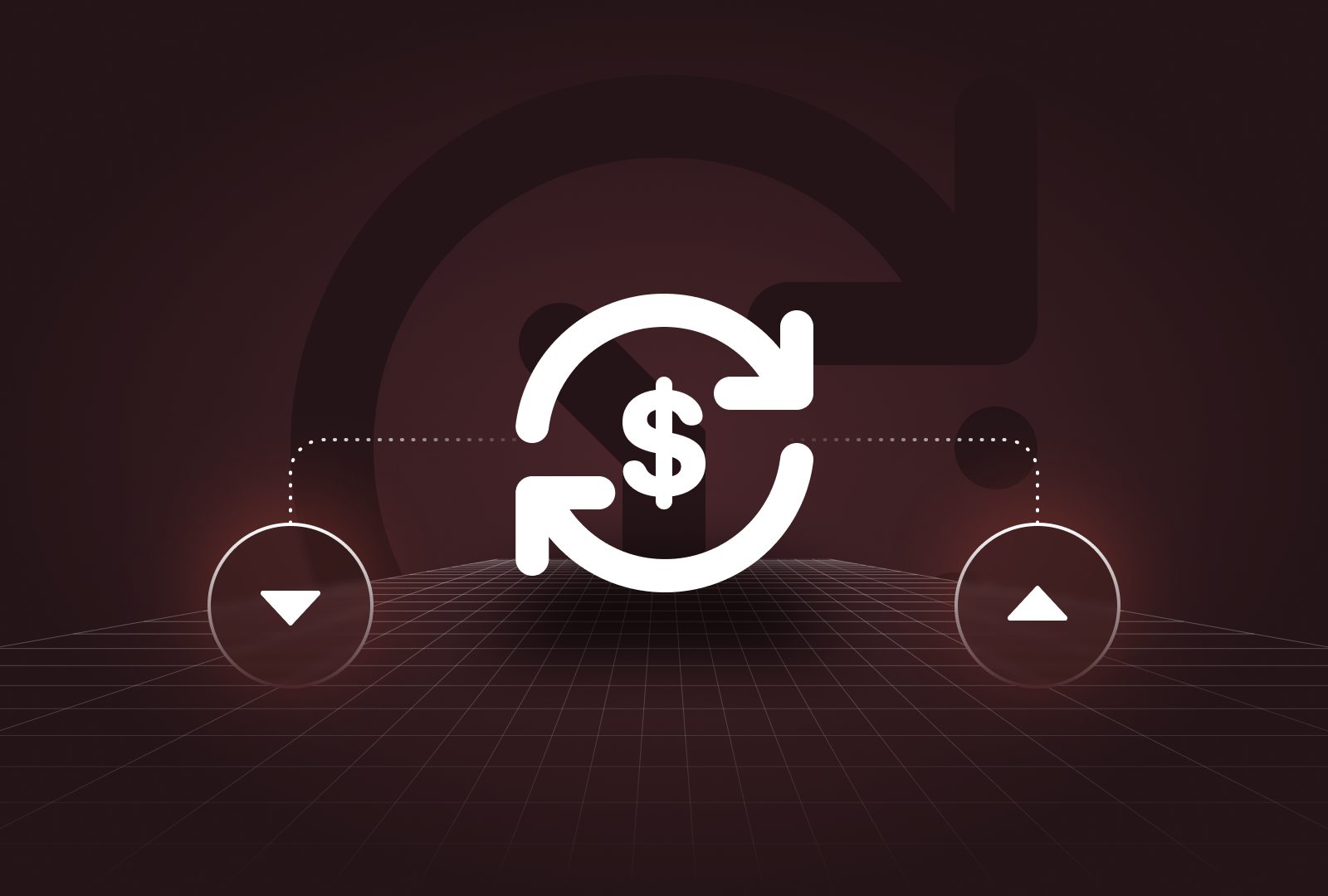In the high-stakes world of enterprise finance, AI isn't just another technology investment—it's rapidly becoming the dividing line between forward-thinking organizations and those left managing yesterday's processes. Yet as finance leaders, we're trained to scrutinize every investment with precision. The question isn't whether to adopt AI, but rather: How do we measure its true financial impact?
Defining ROI in the Context of Finance AI
Traditional ROI calculations were designed for fixed assets with predictable depreciation curves. AI investments follow a fundamentally different pattern—they're dynamic, learning systems that typically increase in value as they process more data and scenarios.
Unlike an ERP implementation where benefits plateau after stabilization, AI solutions in finance tend to compound their value over time. They also deliver probabilistic advantages (better forecasts, faster decisions) rather than guaranteed mechanical outputs.
The "AI Value Stack" for finance can be visualized as four interconnected layers:
- Operational Efficiency – Automating routine tasks, accelerating processes
- Strategic Insight – Uncovering patterns, improving forecasting accuracy
- Risk Mitigation – Detecting anomalies, ensuring compliance
- Growth Enablement – Freeing capacity for value-adding activities
According to BCG's 2025 survey of 280 finance executives, the median reported ROI from AI initiatives is 10%—below the 20% target many finance leaders have set. More concerning, only 45% of executives can actually quantify their AI ROI, highlighting a critical measurement gap.
Key Takeaway: AI ROI in finance requires a multi-dimensional framework that accounts for both immediate efficiency gains and long-term value creation through improved decision quality.
The True Cost Structure of AI Implementation
Calculating AI costs requires looking beyond the obvious software licensing fees. A comprehensive cost structure includes:
Initial Investment
- Solution acquisition – Licensing/subscription fees
- Integration services – Connecting to existing finance systems
- Data preparation – Cleaning, normalizing, and structuring data
- Process redesign – Rethinking workflows to leverage AI capabilities
- Change management – Training, communication, and adoption support
Ongoing Costs
- Maintenance fees – Annual platform costs
- Model retraining – Updating AI models (typically every 12-18 months)
- Internal resources – Staff time for oversight and governance
- Infrastructure – Cloud computing and storage costs
- Compliance monitoring – Ensuring outputs meet regulatory requirements
A common pitfall is underestimating data preparation costs. According to recent industry benchmarks, data cleaning and preparation typically consume 30-40% of initial AI project budgets in finance functions.
Key Takeaway: Comprehensive AI cost modeling must include both visible and hidden expenses across the entire implementation lifecycle, with particular attention to data preparation and ongoing model maintenance.
Quantifying the Value: Beyond Simple Cost Reduction
The value side of the ROI equation is where finance leaders often struggle most. Effective value quantification requires distinguishing between direct (hard) and indirect (soft) benefits:
Direct (Hard) Benefits
- Labor cost reduction – Automating manual processes
- Error reduction – Minimizing costly mistakes and rework
- Cycle time compression – Accelerating close processes and reporting
- Improved forecast accuracy – Reducing cash buffer requirements
- Fraud prevention – Catching anomalies before they impact the business
Indirect (Soft) Benefits
- Decision quality – Making better-informed financial choices
- Strategic agility – Responding faster to market changes
- Employee satisfaction – Reducing burnout from repetitive tasks
- Talent attraction/retention – Offering modern tools and upskilling
- Competitive positioning – Keeping pace with industry innovation
According to Wolters Kluwer's 2025 survey, finance leaders measure AI ROI primarily through cost savings (25%) and time saved on manual processes (23%). However, 22% admitted they don't measure AI ROI at all—a concerning gap in financial governance.
Real-world examples show the potential magnitude of these benefits:
- Forecasting automation: 40% reduction in labor hours, 15% improvement in forecast accuracy
- Anomaly detection: Prevention of $300K+ in fraudulent payments, $75K reduction in audit costs
- Scenario planning: Earlier course correction, saving up to $1.2M in proactive cost containment
- Cash management: $200K annual reduction in borrowing costs through improved DSO
Key Takeaway: Comprehensive value assessment requires quantifying both direct efficiency gains and indirect strategic benefits, with particular focus on decision quality improvements that drive enterprise value.
ROI Calculation Framework and Formulas
Finance leaders need practical formulas to translate AI impacts into boardroom-ready metrics:
Basic ROI Formula
ROI (%) = (Net Benefits - Total Costs) ÷ Total Costs × 100
Where:
- Net Benefits = Sum of all quantified direct and indirect benefits
- Total Costs = Initial investment + ongoing costs over the measurement period
Payback Period
Payback Period = Initial Investment ÷ Annual Net Benefits
Net Present Value (NPV)
NPV = Initial Investment + Σ (Annual Net Benefits ÷ (1 + Discount Rate)^Year)
For AI investments, we recommend these calculation refinements:
- Use a 3-year horizon – Most finance AI solutions reach maturity in this timeframe
- Apply value ramp-up factors – Benefits typically accelerate in years 2-3
- Include sensitivity analysis – Model different adoption rates and efficiency gains
- Incorporate risk-adjusted returns – Account for implementation uncertainty
A practical example: If a $500,000 AI investment in accounts payable automation delivers $250,000 in annual benefits (increasing by 20% each year as the system learns), the 3-year ROI calculation would be:
Year 1 Benefits: $250,000Year 2 Benefits: $300,000Year 3 Benefits: $360,000Total Benefits: $910,000
Initial Investment: $500,000 Ongoing Costs (3 years): $150,000 Total Costs: $650,000
ROI = ($910,000 - $650,000) ÷ $650,000 × 100 = 40% Payback Period = $500,000 ÷ $250,000 = 2 years
Key Takeaway: Finance-grade ROI calculations for AI require multi-year horizons, value ramp-up factors, and sensitivity analysis to account for the learning nature of these investments.
Building a Compelling Business Case
Translating ROI calculations into an approved investment requires a structured business case that resonates with executive decision-makers. The most effective structure includes:
1. Executive Summary (1 page)
- Problem statement and opportunity size
- Proposed solution and implementation approach
- Financial summary (costs, benefits, ROI, payback)
- Strategic alignment with enterprise priorities
- Decision requested and timeline
2. Current State Assessment
- Process inefficiencies and pain points
- Quantified costs of status quo
- Competitive positioning analysis
- Risk of inaction
3. Proposed Solution
- AI capabilities and approach
- Implementation methodology and timeline
- Resource requirements
- Governance and risk management
4. Financial Analysis
- Detailed cost breakdown
- Benefit quantification (direct and indirect)
- ROI, payback period, and NPV calculations
- Sensitivity analysis with best/worst case scenarios
5. Implementation Roadmap
- Phased approach with quick wins identified
- Key milestones and success metrics
- Resource allocation plan
- Change management strategy
According to recent research, 37% of finance leaders cite unclear ROI or business case as the top barrier to scaling AI. A well-structured business case addresses this directly by connecting AI capabilities to specific financial outcomes.
Key Takeaway: Successful AI business cases combine rigorous financial analysis with compelling strategic narratives, focusing on both efficiency gains and decision quality improvements.
Frequently Asked Questions
What ROI should I expect in year one?
First-year returns vary significantly by use case. According to BCG's 2025 research, one-third of finance AI implementations deliver less than 5% ROI in year one, while another quarter achieve 5-10%. The most successful implementations (roughly 20%) deliver 20%+ ROI. Focus on quick wins in targeted areas rather than enterprise-wide transformation to maximize year-one returns.
How do I account for intangible benefits like risk reduction?
Risk reduction can be quantified through expected value calculations: multiply the probability of an adverse event by its financial impact, then estimate how AI reduces this probability. For example, if there's a 5% annual chance of a $1M regulatory fine, and AI reduces this to 1%, the risk reduction value is $40,000 annually (4% × $1M).
Should we build internal AI capabilities or buy solutions?
For most finance functions, partnering with specialized providers delivers faster ROI than building in-house. According to Wolters Kluwer's 2025 survey, finance teams that collaborate closely with external vendors enhance AI success rates by leveraging pre-trained models and implementation expertise. Build versus buy decisions should factor in time-to-value alongside total cost of ownership.
How can we accelerate time-to-value?
The most successful finance AI implementations share three characteristics: (1) they target specific, high-value use cases rather than boiling the ocean; (2) they ensure data readiness before implementation begins; and (3) they invest appropriately in change management and training. According to Stanford's 2025 AI Index, organizations that provide staff training on AI (65%) and upskilling opportunities (50%) see significantly faster adoption and value realization.
How do we measure AI ROI in forecasting applications?
Forecasting improvements can be quantified through: (1) reduced variance between forecast and actual results; (2) reduced time spent creating forecasts; (3) decreased cash buffer requirements due to improved confidence; and (4) avoided losses from earlier detection of negative trends. A 10% improvement in forecast accuracy typically translates to 3-5% working capital optimization.
Article Takeaways
- AI ROI is multidimensional – Measure both efficiency gains and decision quality improvements
- Comprehensive cost modeling is critical – Include data preparation, integration, and ongoing maintenance
- Benefits compound over time – AI systems improve with data exposure, creating accelerating returns
- Quick wins matter – Start with targeted, high-value use cases rather than enterprise-wide transformation
- Measurement drives success – Organizations that quantify AI ROI achieve significantly better outcomes
At Payflows, we've seen firsthand how AI transforms finance operations from cost centers to strategic enablers. Our AI-native platform helps finance leaders not only calculate but actually accelerate ROI through intelligent sub-ledgers where finance, operations, and business teams collaborate alongside AI to streamline processes, make better decisions, and generate accurate entries at scale.
To learn how Payflows can help your organization measure and maximize the ROI of AI in finance, connect with our team of finance transformation experts today.





.png)
.png)





.png)



